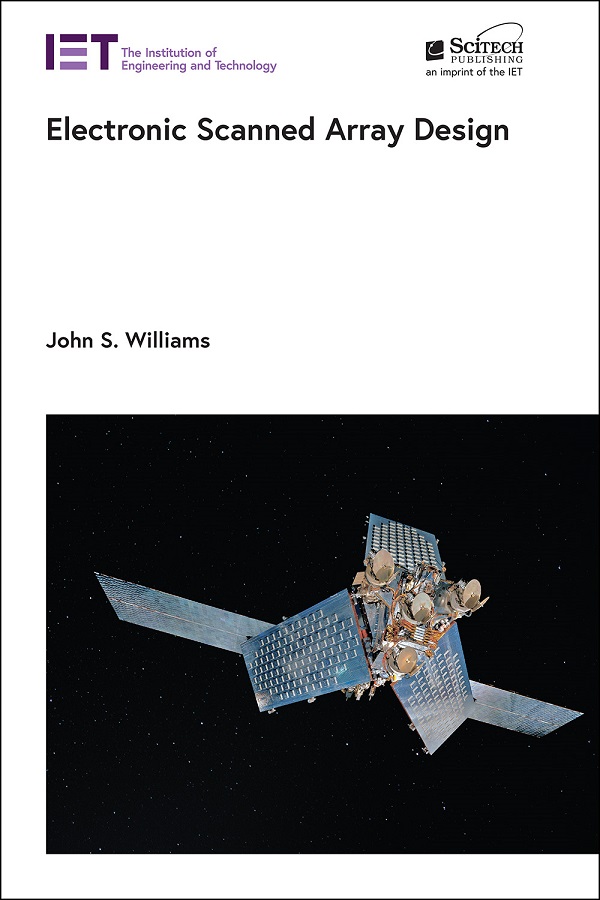- Agricultural Engineering and Technology
- Applied Physics
- Built Environment
- Computing and Networks
- Control, Robotics and Sensors
- Electrical Regulations
- Electromagnetics and Radar
- Energy Engineering
- Healthcare Technologies
- History and Management of Technology
- IET Codes and Guidance
- Manufacturing
- Materials, Circuits and Devices
- Model Forms
- Security
- Telecommunications
- Transportation

Electronic Scanned Array Design
by John S. Williams
Electronic Scanned Array Design covers the fundamental principles of ESA antennas including basic design approaches and inherent design limitations. These insights enable better appreciation of existing and planned ESA systems including their application to earth observation. The material describes general design principles of aperture antennas applied to the specific case of ESA design.
System applications are discussed to set the framework for requirements allocation and flowdown. Specific examples are cited throughout to relate theory to practice. The book begins by introducing the concept of electronic scanned arrays, giving a brief history of the technology and outlining its scope and applications. Further chapters cover antenna principles; synthetic arrays; antenna figures of merit; mutual coupling effects; errors and tolerances; grating lobes; thinned arrays; beam width and sidelobes; beam shaping and spoiling; reflector applications; design practice; radiating elements; T/R modules; assembly, packaging, power and thermal management; technology base and cost; and ESAs in space. The final chapter offers a comparison between an ESA and a reflector, exploring their benefits, detriments and design trades.
The book will be invaluable for radar and antenna engineers and researchers, and advanced students studying ESA design.
About the Author
John S. Williams received his bachelor's and master's degrees in physics from Caltech and the University of California at Irvine respectively and is a Senior Member of the IEEE. He worked on a variety of ESAs since 1980 at Hughes Aircraft Corporation, Raytheon and The Aerospace Corporation. He managed T/R module development, ESA demonstration and manufacturing technology programs. He is now retired.
Publication Year: 2020
Pages: 357
ISBN-13: 978-1-78561-929-8
Format: HBK
